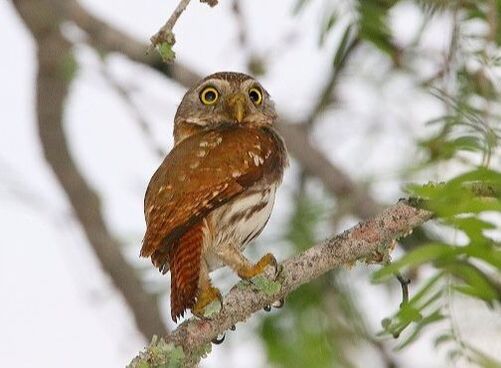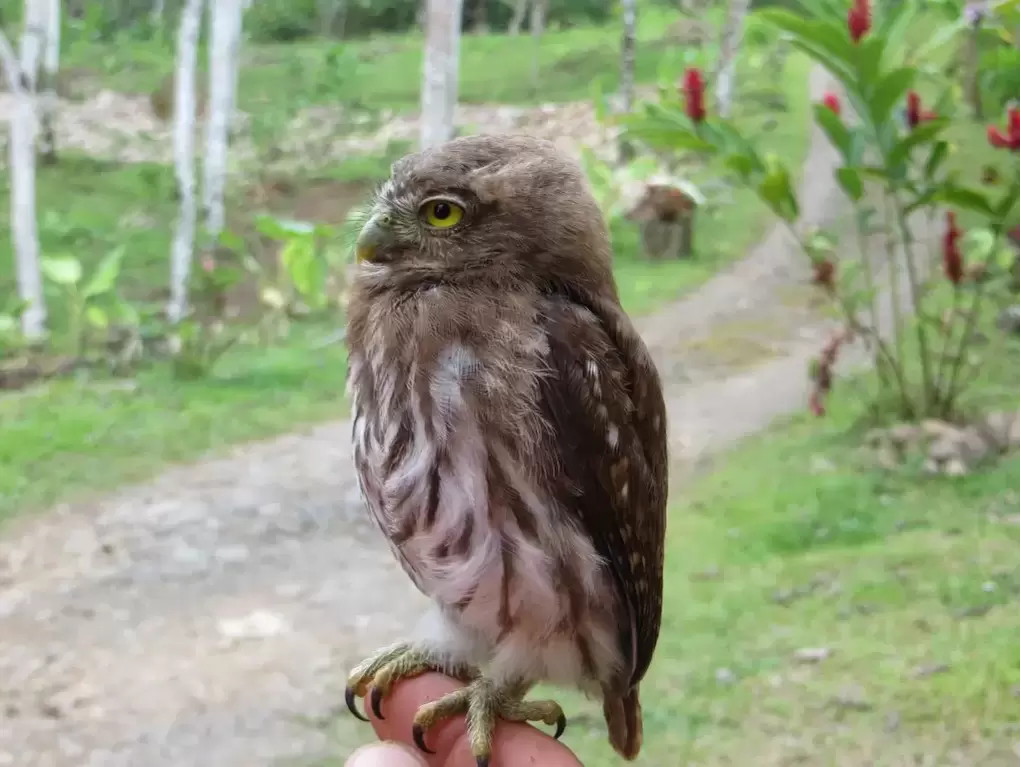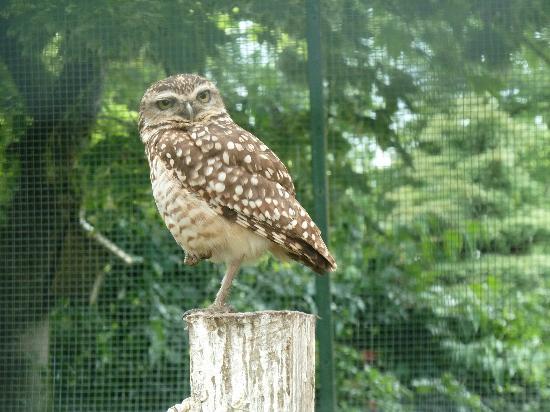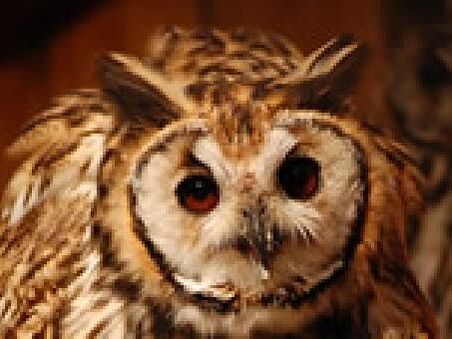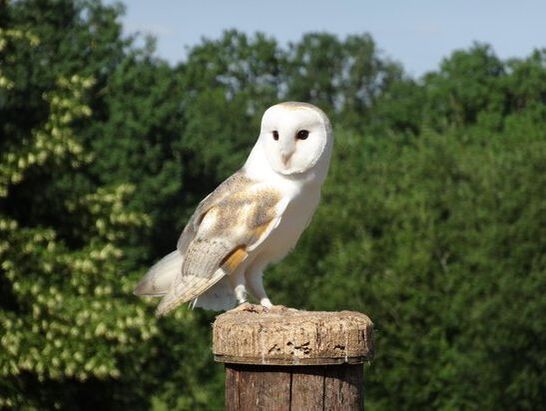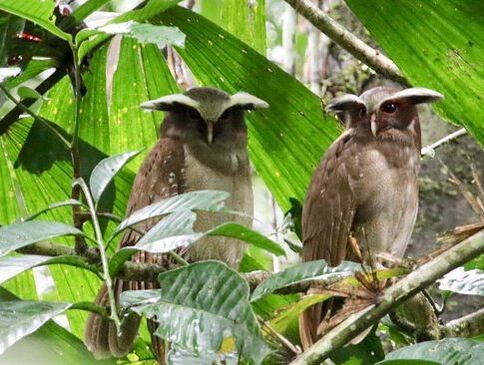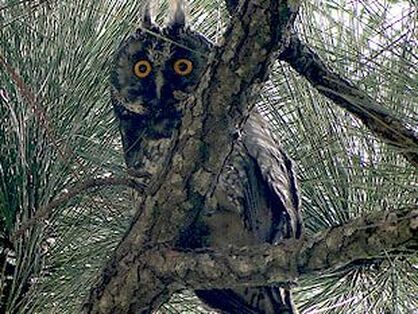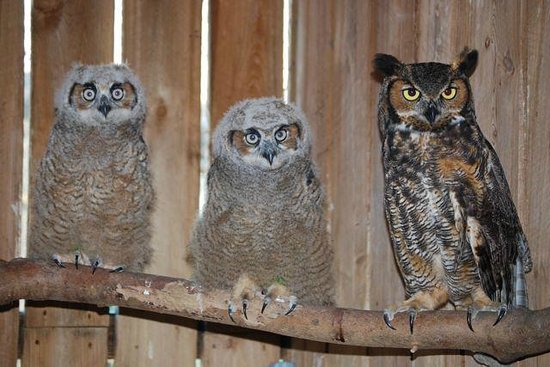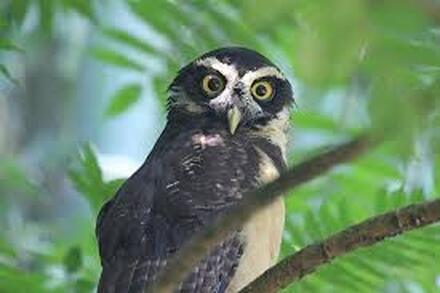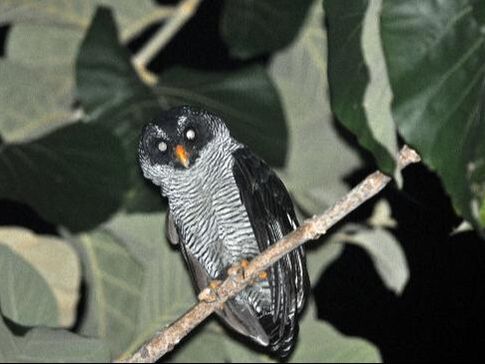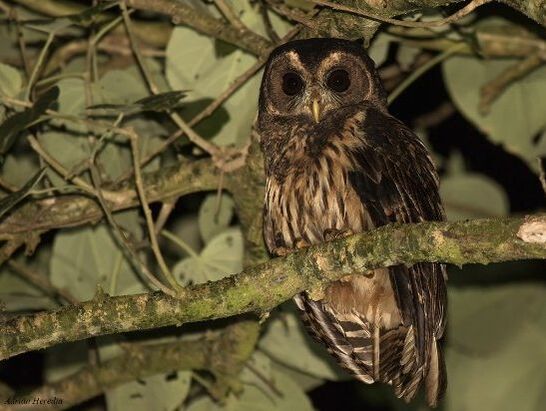Owls - in Belize
Vermiculated Screech Owl
Vermiculated Screech Owl - It is a medium-sized bird within its species, which can measure up to 23 cm in length. There is no sexual dimorphism, although one way to differentiate the male from the female is because of its size, as it is usually a little larger.
Unlike the rest of the members of the same species, this one has feathers that cover its feet. The colour of the plumage is reddish grey. The tail is long and the lower part of its body has longitudinal stripes and some horizontal stripes. Its face is bordered with dark feathers and has relatively short locks. Their eyes are yellow and their beaks are olive green. |
Ferruginous Pygmy Owl
Ferruginous Pygmy Owl - Widespread and generally common little owl of tropical lowlands, often seen and heard during the daytime. Favors open tropical woodland and edge, second growth areas with trees (including towns, even cities with wooded parks), tropical pine savannas. Persistent whistles and mobbing bands of small birds often draw attention to pygmy-owls, which can be perched up on open snags or buried deep in cover. Color varies from rusty to grayish overall, but all color types have fine whitish streaks on crown (not spots) and numerous, narrow dark tail bars.
|
Central American Pygmy
Central American Pygmy Owl - Very small owl of humid evergreen forest in tropical lowlands that is active during the day. Favors forest canopy where it is rarely seen, but sometimes hunts low at forest edges. Most often detected by its tooting call, given at any time of day but mainly early and late. Like other pygmy-owls, presence often revealed by mobbing bands of small songbirds. Ferruginous Pygmy-Owl favors more open habitats, is seen much more frequently, and has pale streaks (not spots) on the crown and a slightly different tooting song.
|
Burrowing Owl
Burrowing Owl - Small, long-legged owl of open grassy habitats. Appears brown at a distance with irregular white spotting. Yellow eyes. Typically found on the ground or perched on low fence posts or rocks. Active during day and night when it hunts mainly for insects and small mammals. When agitated, it stands erect and abruptly bows down. Nests in a burrow, often dug by a prairie dog or tortoise.
INTERESTING FACTS
|
Stripped Owl
Stripped Owl - Fairly large, pale, eared owl with honey-colored eyes. Favors savannas and other open areas with scattered trees and bushes, such as cane fields and open plantations. Roosts in dense foliage or on the ground, but often hunts from roadside perches such as utility wires. Note the prominent ear tufts (rarely held flattened), whitish face rimmed with black, and whitish underparts with neat dark streaking. Compare with Short-eared Owl.
|
Barn Owl
Barn Owl - Pale owl; white below and orangey with gray spotting above. Heart-shaped white facial disc. Hunts primarily rodents in open areas by night. Roosts in old buildings and nest boxes by day. Widespread across every continent except Antarctica. Appears very white in headlights at night. Its call is a bone chilling, rising shriek.
INTERESTING FACTS
|
Crested Owl
Crested Owl - Uncommon but unmistakable. Large spectacular owl of humid evergreen forest in tropical lowlands and foothills. Often roosts in pairs at low levels inside the forest, sometimes in rather open situations. Roosting birds often hold their long, bushy white eyebrows flattened, but raise them when alert. At night, favors dense forest canopy. Calling birds can be very difficult to locate. Call is a short, throaty, intensifying growl, typically repeated every 5–10 seconds.
|
Stygian Owl
Stygian Owl - The Stygian owl (Asio stygius) is a medium-sized dusky colored owl. It has yellow eyes, a black beak, a dark blackish facial disk, and white eyebrows. Its underparts are a dingy buff color with dark brown barring and streaks. The upperparts are reverse, buff barring and streaks on a dark background. The adjective "Stygian" means "of, or relating to, the River Styx", but is more widely applied to anything that is dark or dismal.
|
Great Horned Owl
Great Horned Owl - Large and widespread owl with distinctive ear tufts. Found in a variety of habitats from dense woods to prairie and deserts with at least some trees. Also, found in wooded towns and suburbs. Typically well-camouflaged dark brown overall, but varies in color. Often engages in haunting duets, with males and females hooting back and forth. Preys upon a variety of animals, including mammals, birds and reptiles.
INTERESTING FACTS
|
Spectacled Owl
Spectacled Owl - Uncommon but unmistakable. Very large spectacular owl of humid evergreen forest in tropical lowlands and foothills. Often roosts at low to middle levels, usually well hidden in shady spots, and flushes easily. At night, favors open forest canopy and forest edge, but calling birds can be well hidden in foliage. Song is a resonant, pulsating series of deep hoots, sounding rather like a sheet of metal being flexed quickly; an uncommon variant call of the Mottled Owl sounds rather similar.
|
Black & White Owl
Black & White Owl - Handsome but scarce large owl of tropical lowland forest and edge. Found in forests, plantations, gardens, and towns. Mainly roosts high in trees during the day, but sometimes roosts in rather open situations. At night it hunts mainly at higher levels, but sometimes can be found pursuing bats under streetlights. Note the bright yellow bill and feet and boldly patterned black-and-white plumage. Varied hooting calls often end with an emphatic note.
|
Mottled Owl
Mottled Owl - Medium-sized patchy-looking owl with dark eyes. Densely-marked orange-and-gray coloration is unique. Typically gives single hoots, but also gives an odd, mellow tremolo vocalization in the breeding season. A lowland species, favoring groves and clusters of trees in open plains and on the edges of cultivated areas.
|


